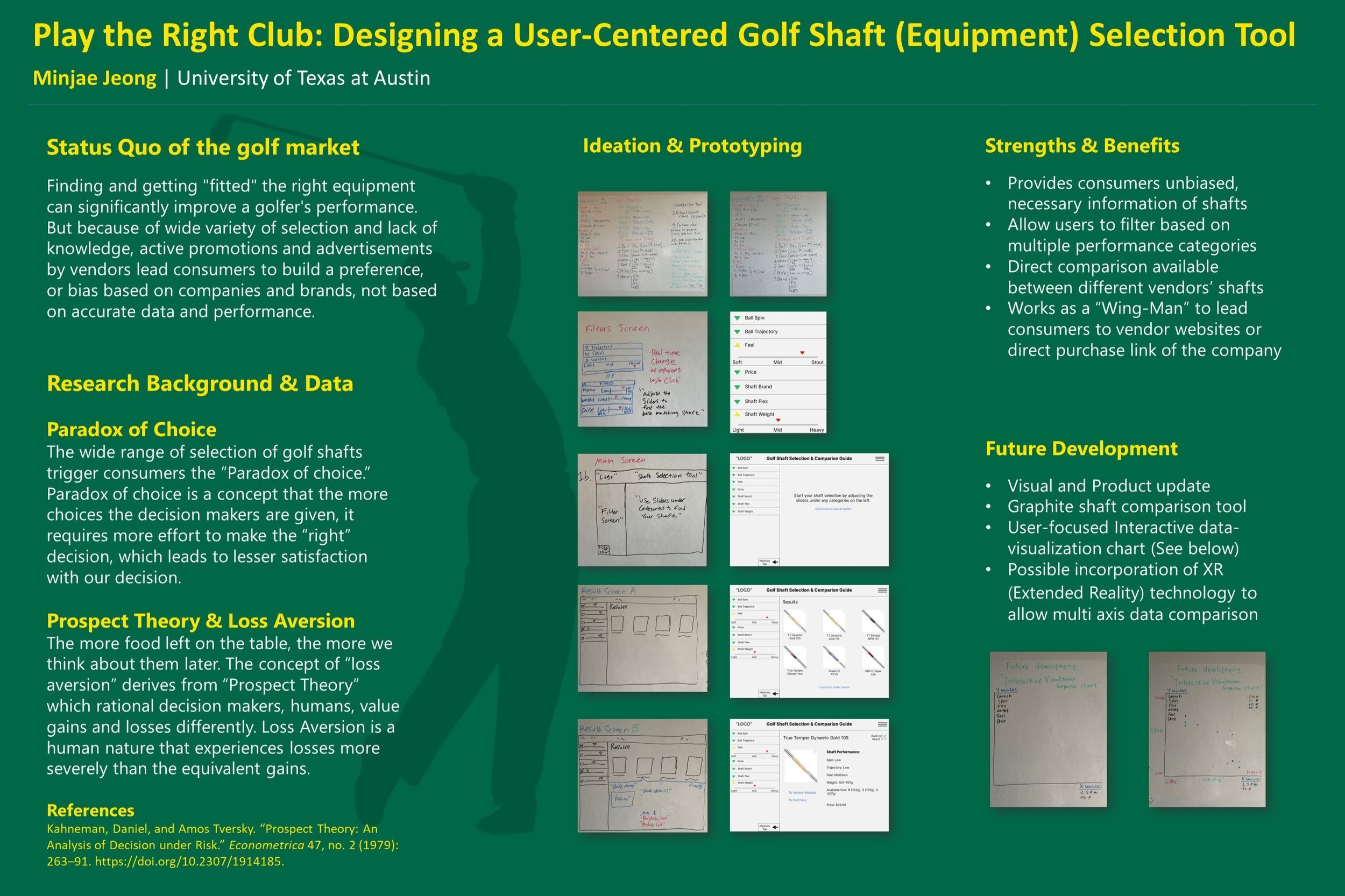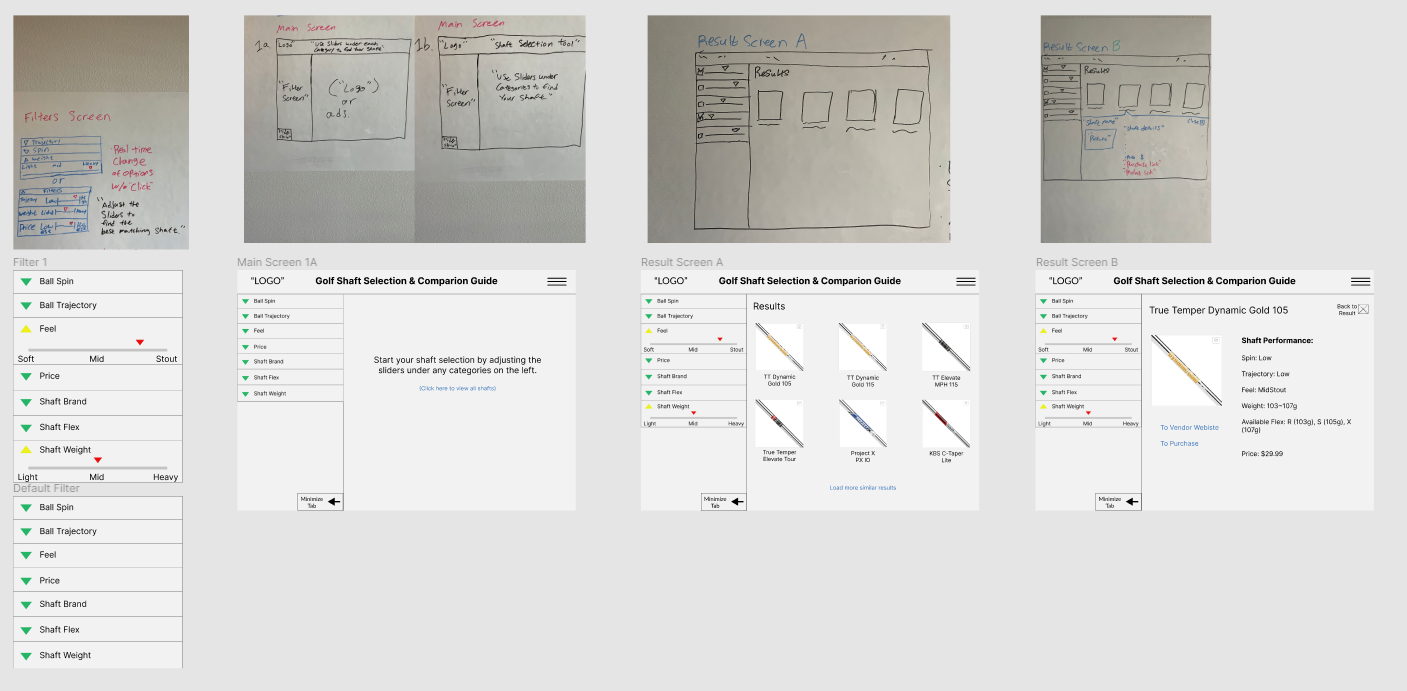Play the Right Club: Designing a User-Centered Golf Equipment Selection Tool
Finding and getting "fitted" the right equipment can significantly improve a golfer's performance. But because of wide variety of selection and lack of knowledge, active promotions and advertisements by vendors lead consumers to build a preference, or bias based on companies and brands, not based on accurate data and performance. This tool is an alternative method of equipment selection process that maximizes the utility (satisfaction) of the consumer while minimizing the "regret" of choosing a specific shaft over others.
The objective of the project is to create a better experience for many golfers who struggle to find the right equipment to play their game. Finding and getting “fitted” the right equipment can significantly improve a golfer’s performance. All golfers swing differently at different speed, angle of attack, tempo, spin level, and many more variables that account into a golf shot. There is no “one size fits all” for every golfer, but because of such variety there are so many different combinations of golf shafts and club heads available in the market, triggers the “Paradox of choice.” Paradox of choice or the “Choice paradox” is a concept that the more choices the decision makers are given, we expect it would be easier to choose an option that will increase the satisfaction of the result of the choice made. However, too many options require more effort and can lead us to feel unsatisfied with our choice even if we made the best decision. That is because of “loss aversion,” a human nature that experiences losses more severely than the equivalent gains. The concept of “loss aversion” derives from “Prospect Theory”, (Kahneman & Tversky, 1979) which rational decision makers, humans, value gains and losses differently. The value of this preference is measured as “utility”. In the paradox of choice, too many options given increases the opportunity cost of a choice. The higher the opportunity cost of a selection is, the higher the loss of “utility” is. In terms of golf equipment, golf clubs are expected to be used for at least around ~2 years, and consumers do not intend to spend extra money on new products to replace frequently unless sponsored by the manufacturers like the professionals. Furthermore, golf clubs are getting more expensive every hour these days, a big part that has to do with the pandemic. The impact on the supply chain and an unprecedented popularity of golf skyrocketed the demand of golf clubs, leading many golf shaft and club manufacturers to produce newer products more frequently than ever, advertising they offer better technology to improve a golfer’s performance. With all such reasons, many golfers expect a drastic difference in their golf game with a new club they just bought, but not many amateur golfers (and the pros) gain such great utility from their new $700 dollars driver when they are not hitting solid “bombs”. In conclusion, I want to come up with a system that can be operated on a mobile device or a computer that offers a better selection process of golf equipment to the consumers in order to maximize the utility of their selection and minimize the opportunity cost, a “regret” of choosing one golf shaft over the other hundreds shafts in the market. Many equipment manufacturers these days provide information and a simple tool that gives a general guideline of which product of their own the customer should use based on the information and preferences the customer has provided. However, based on my personal experience, it only offers a vague recommendation without sufficient reasoning that could create a bias on the user.
Reference:
Kahneman, D., & Tversky, A. (1979). Prospect Theory: An Analysis of Decision under Risk. Econometrica, 47(2), 263–291. https://doi.org/10.2307/1914185


